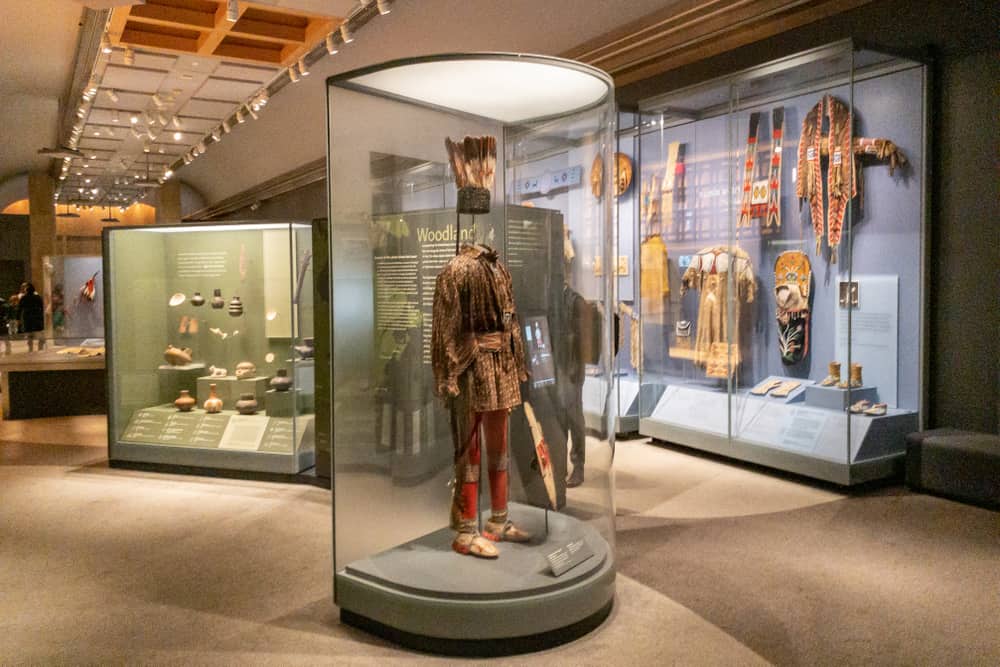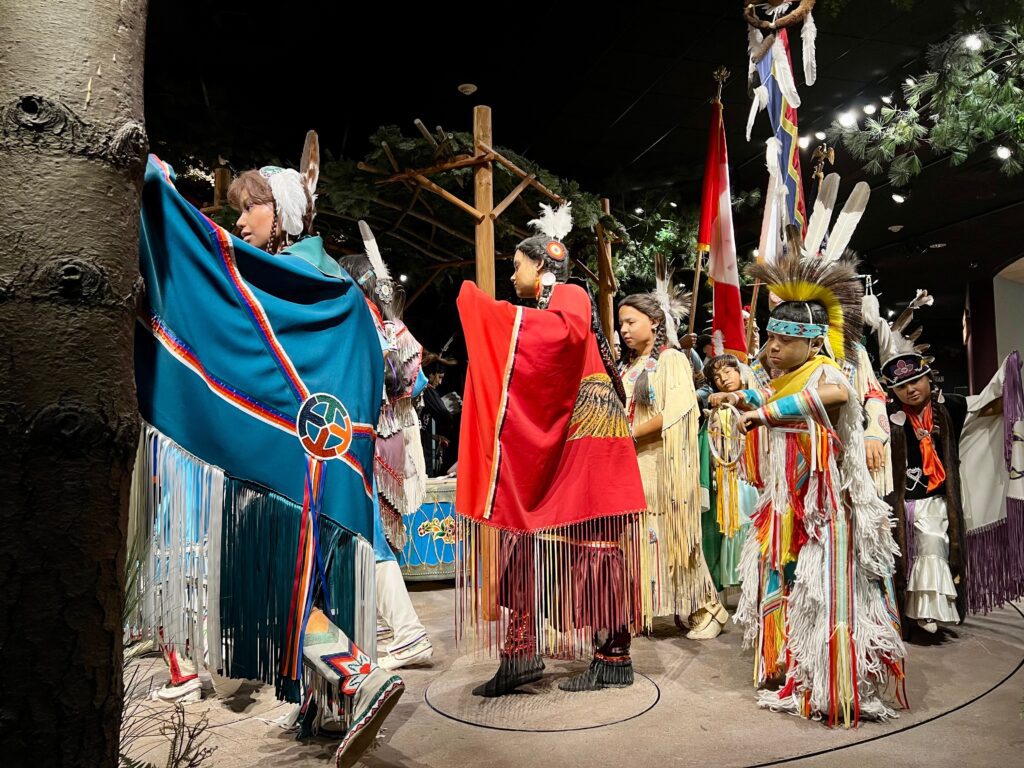
The Indigenous Lens: Native American Museums with a Local Tribal Focus
The landscape of museum studies has undergone a profound transformation, moving from a colonial, often extractive model to one that prioritizes community engagement, indigenous voices, and self-representation. Within this evolution, Native American museums with a specific focus on local tribes stand as critical institutions. These establishments are more than mere repositories of artifacts; they are dynamic cultural centers, educational hubs, and vital instruments of tribal sovereignty, dedicated to the preservation, interpretation, and revitalization of distinct indigenous cultures within their ancestral homelands. This article delves into the multifaceted nature of these museums, exploring their historical context, core functions, methodologies, challenges, and profound significance.
Historical Context and the Decolonization of Museology
Historically, Native American cultural heritage was predominantly collected, studied, and exhibited by non-Native institutions—anthropological museums, art museums, and historical societies. These early collections were often acquired under questionable circumstances, reflecting an ethnocentric gaze that frequently essentialized, misrepresented, or romanticized indigenous peoples as "vanishing races." Objects were decontextualized, narratives were imposed by outsiders, and the living vibrancy of cultures was often reduced to static displays of the past.
The mid-20th century witnessed a growing wave of indigenous activism and self-determination movements. This era spurred a critical re-evaluation of museum practices and ownership. Landmark legislation such as the Native American Graves Protection and Repatriation Act (NAGPRA) of 1990 in the United States marked a pivotal turning point, mandating the return of human remains, funerary objects, sacred objects, and objects of cultural patrimony to lineal descendants and culturally affiliated Native American tribes. NAGPRA not only facilitated the physical return of heritage but also fundamentally shifted power dynamics, affirming tribal sovereignty over cultural property and catalyzing the establishment of tribally-owned and operated museums.

These tribally-led initiatives were born out of a necessity to reclaim narratives, assert cultural authority, and ensure that the interpretation of their heritage was guided by their own epistemologies and lived experiences. The "local tribal focus" distinguishes these institutions from broader "pan-Indian" museums or non-Native museums with Native American collections. Their primary allegiance is to a specific tribal nation or a confederation of closely related nations, focusing on their unique history, language, traditions, and contemporary life within their particular geographic and cultural context.
Core Functions and Methodologies
Native American museums with a local tribal focus serve several interconnected functions, each underpinned by principles of cultural sovereignty, community engagement, and indigenous knowledge systems.
1. Cultural Preservation and Stewardship
At their heart, these museums are guardians of tangible and intangible heritage. Preservation extends beyond the physical safeguarding of artifacts like regalia, tools, pottery, and ceremonial objects. It encompasses the meticulous documentation and revitalization of:
- Oral Histories: Recording and archiving the narratives, testimonies, and traditional knowledge passed down through generations, ensuring their continuity.
- Languages: Many indigenous languages are endangered. Museums play a crucial role in language revitalization programs, offering classes, developing dictionaries, and creating immersive learning environments.
- Traditional Arts and Practices: Supporting master artists and culture bearers who teach traditional crafts, songs, dances, and ceremonies, preventing the loss of vital skills and expressions.
- Ecological Knowledge: Documenting and sharing indigenous understanding of local flora, fauna, land management, and sustainable practices, which are intrinsically linked to cultural identity and ancestral territories.

The concept of "stewardship" in this context is often holistic, reflecting a deep spiritual connection to the land and the objects, which are viewed not merely as historical items but as living entities imbued with cultural significance.
2. Authentic Exhibition and Interpretation
The most distinguishing feature of these museums is their unwavering commitment to self-representation. They provide platforms for tribal members to tell their own stories, in their own voices, on their own terms. This contrasts sharply with historical interpretations that often filtered indigenous experiences through an external, frequently biased, lens.
Key aspects of their exhibition and interpretation strategies include:
- Narrative Control: Exhibitions are developed in close consultation with tribal elders, historians, and community members, ensuring accuracy, cultural sensitivity, and adherence to indigenous protocols. This often means challenging colonial narratives, correcting historical inaccuracies, and providing context for historical trauma alongside stories of resilience and resistance.
- Beyond the Past: While acknowledging deep historical roots, these museums emphasize the dynamism and continuity of Native American cultures. They showcase contemporary art, current issues, and ongoing contributions of tribal members, demonstrating that indigenous cultures are vibrant, evolving, and very much alive.
- Multisensory Engagement: Moving beyond static displays, many incorporate interactive elements, multimedia presentations, soundscapes, and traditional storytelling techniques to create immersive and culturally resonant experiences. The use of indigenous languages in interpretive texts is also a common and powerful practice.
- Contextualization: Objects are presented not as isolated artifacts but within their cultural, ceremonial, and historical contexts, explaining their purpose, materials, and the spiritual significance they hold for the community.
3. Education and Community Engagement
Education is a cornerstone of these institutions, serving both internal tribal communities and external audiences.
- Internal Education: For tribal members, particularly youth, these museums are vital for cultural continuity. They offer programs, workshops, and mentorship opportunities that connect younger generations with their heritage, language, and elders, fostering a strong sense of identity and belonging. They serve as spaces for intergenerational knowledge transfer.
- External Education: For non-Native visitors, these museums offer unparalleled opportunities for cross-cultural understanding, dispelling stereotypes, and promoting accurate knowledge about specific tribal nations. They educate about tribal sovereignty, treaty rights, contemporary challenges, and the profound contributions of Native peoples to the broader society. This fosters empathy, challenges prejudice, and encourages respect.
- Community Hubs: Beyond formal exhibitions, many museums function as community centers, hosting cultural events, traditional ceremonies, tribal council meetings, and social gatherings, reinforcing their role as integral parts of the tribal social fabric.
4. Research and Scholarship
Native American museums are increasingly becoming centers for indigenous-led research. This research is often collaborative, ethical, and community-driven, prioritizing indigenous research methodologies and epistemologies. Areas of focus include:
- Ethnohistory and Archaeology: Re-examining historical records and archaeological findings through an indigenous lens, often revealing new interpretations and filling gaps in mainstream scholarship.
- Linguistic Studies: Developing and documenting tribal languages, creating resources for language learners, and contributing to the broader field of linguistics.
- Cultural Resource Management: Partnering with federal and state agencies on projects impacting ancestral lands, ensuring that cultural sites are protected and respected.
- Contemporary Issues: Researching and advocating for issues relevant to the tribal community, such as environmental justice, health disparities, and economic development.
Challenges and Opportunities
Despite their crucial role, Native American museums with a local focus face numerous challenges. Funding is often a primary concern, as many operate with limited budgets compared to larger mainstream institutions. Building and maintaining state-of-the-art facilities, attracting and retaining professional staff, and developing extensive collections require significant financial investment. Repatriation, while a moral imperative, can also be a complex and resource-intensive process. Furthermore, balancing traditional cultural protocols with modern museum practices requires careful negotiation and innovative solutions.
However, these challenges are met with significant opportunities. The rise of digital technologies offers new avenues for cultural preservation and dissemination, allowing museums to create virtual exhibits, online language resources, and digital archives that reach broader audiences globally. Increased recognition of indigenous rights and the decolonization movement within broader museology mean greater potential for partnerships, grants, and collaborative projects. Moreover, these museums are increasingly seen as engines of economic development through cultural tourism, providing employment and showcasing local artistic talents.
Conclusion
Native American museums with a local tribal focus are more than just buildings housing collections; they are living testaments to the resilience, creativity, and enduring spirit of indigenous peoples. They are sacred spaces where history is honored, languages are revitalized, and traditions are passed to future generations. By reclaiming narratives, asserting cultural sovereignty, and fostering deep community engagement, these institutions not only preserve distinct cultural identities but also educate the world about the rich tapestry of human experience, challenging preconceived notions and building bridges of understanding. Their continued growth and evolution are essential for the flourishing of indigenous cultures and for a more just and inclusive global society.


